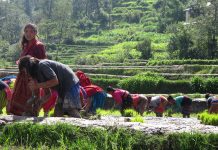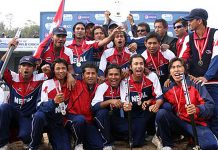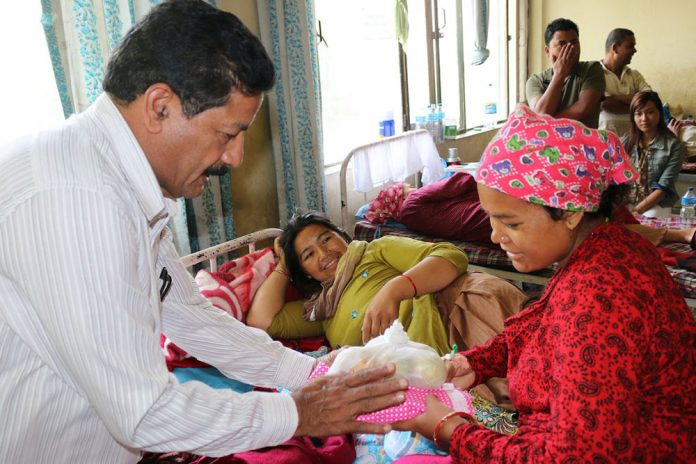About a year back, an international health journal lancet acknowledged Nepal for its progress in reducing the Maternal Mortality Rate (MMR). It categorized the country among those six which would meet Millennium Development Goals (MDGs). In course of reducing the death toll to 281 per 100,000 from 539 in 1996, Nepal has made a real progress.
There was a huge debate on the issue of legalizing abortion in our country. But now with the decrease in MMR, even health experts believe that one of the major reasons behind Nepal’s success in minimizing mothers’ death is legalization of abortion.
There are also other factors like government’s scheme of paying to the maternal and child health workers, who provide home delivery service and the scheme of paying to the mothers who go to government’s health institution for delivering baby.
But we still need to do more on this sector. We should learn about initiatives being taken in other countries in the region because thousands of women in our country still succumb to pregnancy-related complications during pre-and post-delivery every year.
There are just eight years left for the countries in the region including Nepal to meet MDG on maternal health. Though Nepal has made some progress, we need to put an extra effort to minimize death. Pakistan, for instance, has 420 deaths per 100,000 live births (there is a loss of three women every hour according to Society of Obstetricians and Gynecologists of Pakistan). For this, it can share some best practices from Nepal, while Nepal too can learn about keeping its health professional intact in health institutions and give especial focus on Emergency Obstetricians Care Centers (EOCC) towards which Pakistan has already started working.
Pakistan at present doesn’t have provisions that are being in practice in Nepal – paying to health workers or mothers. But it has started working on increasing the number of female health workers, who would go door to door to ensure that no women dies due to pregnancy-related complications. Pakistan has aimed to hire 100,000 lady health workers, who would be paid by the government. So, why don’t we think about paying and training our 50,000 female health volunteers who are already into the health system? If they were paid well they would have been more encouraged. Because these are the women who have been continuously teaching grassroots women how they should take care of themselves during pre-and post- delivery and pregnancy time. Similarly, these thousands of women have been distributing iron capsule that has vital role in saving mothers. It is their effort that the contraceptive use has increased. However, we also have to regard non-governmental and donor agencies that have been often providing awareness and refreshing training to these women with commitment besides supporting governments’ effort.
We have to think that when volunteers have been working so hard they would for sure be more committed if the government gives some incentives. I mean to say that we should also take this kind of initiatives – paying them on monthly basis.
We lack transportation facility to take women to health facilities. We lose our mothers due to lack of proper attention by relatives and sometimes by health workers. This is the time for us to put every effort to ensure that no mother dies while giving future to the nation – a child. Even if we have the provision of paying mothers it would not always work perfectly because there are geographical set-ups where there are no health institutions and even if there are there are not delivery rooms or health workers for safe delivery. So, if we succeed in making the trained women present in every village, we may not even lose a single mother.
In addition, the government should prioritize EOCC too. Nepal’s health ministry has already remarked that the reason behind most of the uncontrolled deaths is lack of EOCC, which also should have blood bank. Nepal has only 32 EOCC that also basically in big hospitals. Its real condition has also not been properly monitored. The availability of EOCC would ensure that no women will die even if she is facing the most challenging situation.
In Pakistan, UNFPA has started hiring health workers, especially doctors by paying more money to them and helping renovating health infrastructure, so that there will be more number of EOCC with doctors working in. It is also providing necessary equipment needed for such centers and also infrastructure, which doctors would need in their quarter to live with comfort. UNFPA there believes that such initiatives can keep health workers including doctors intact in health set up.
Every women has the right to live and the state has the obligations to ensure women’s right to life.
Picture of MMR in the Nepal since 1991
1991 – 550
1996 – 539
2001 – 415
2006 – 281
MDG goal to be met by 2015 – 213
Four delays in South Asia including Nepal that result in the death of mother:
– Delay in recognizing the problem
– Delay in taking decision
– Delay in transportation
– Delay in receiving treatment at health institution
– Sangeeta Rijal










































